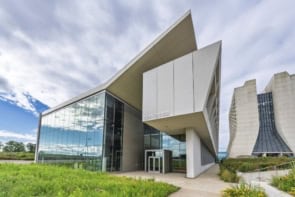
A US government agency has launched a new $30m programme to support alternative approaches to generating energy from nuclear fusion. The initiative has been created by the Advanced Research Projects Agency – Energy (ARPA-E), which falls under the auspices of the Department of Energy (DOE). In August, the DOE invited researchers to “develop and demonstrate low-cost tools to aid in the development of fusion power”. Research teams need to outline their proposals by 14 October with three-year grants ranging from $250,000 to $10m up for grabs.
Fusion researchers have welcomed the new programme, which comes as fusion research in the US faces severe budget constraints. As one of seven partners in the €16bn ITER fusion project, the country has to provide 9% of the reactor’s components – at a cost of $3.9bn – despite a flat overall national fusion budget, which has put a squeeze on domestic fusion facilities. Next year’s budget is also far from certain after the White House recommended static spending, the House of Representatives called for an increase and the Senate even voted to kill the US contribution to ITER.
Budget casualty
One of the casualties of this ongoing budget squeeze was a DOE project called High Energy Density Plasma (HEDP), which was cancelled in 2013. This programme had supported projects lying between the low-density, long-duration approach of magnetically confined fusion – like ITER – and the very fast, very high density of inertial-confinement fusion, as carried out at the US’s National Ignition Facility. The demise of HEDP ended projects at several US national laboratories that used electrical pulses, magnetic fields, lasers and even high explosives to achieve fusion.
The new programme from ARPA-E will tap into this middle ground, focusing both on “targets” (methods for containing plasmas) and “drivers” (systems for heating and compressing plasmas). “I have long advocated that the parameter space in-between conventional [magnetic-fusion and inertial-fusion] regimes is clearly where the advantages of [both] can be combined, while eliminating some of the disadvantages,” says plasma physicist Glen Wurden of the Los Alamos National Laboratory in New Mexico, who works on magnetized plasmas.
“Members of the HEDP fusion community, especially those previously working in the area of magneto-inertial fusion before the funding was cut, were thrilled to finally see the ARPA-E funding opportunity announced,” he adds.
- The Canadian company General Fusion is taking a similar approach to fusion and is profiled in the article “Firm takes middle ground to fusion”



